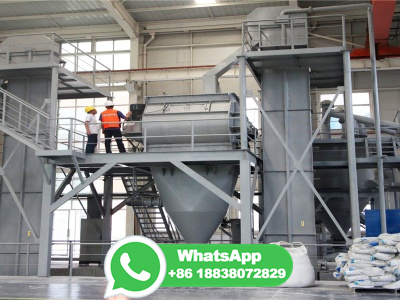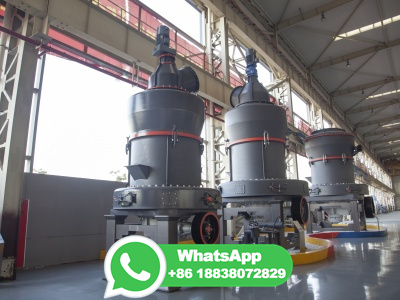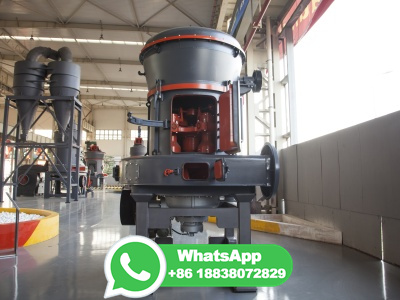
Introduction. The spontaneous combustion of coal is a major disaster in the mining, storage, and transportation chain of coal production, restricting the development of the coal industry [1,2].The spontaneous combustion of coal not only causes significant wastage of coal resources [3,4], but also leads to mine fires that vary the airflow in the mine ventilation system, resulting in gas ...
WhatsApp: +86 18037808511
In industrial chemistry, coal gasification is the process of producing syngas—a mixture consisting primarily of carbon monoxide (CO), hydrogen (H 2), ... Combustion of the product gas in gas boilers is ecologically cleaner than combustion of initial coal. Thus, a plant utilizing gasification technology with the "reversed blowing" is able to ...
WhatsApp: +86 18037808511
Oxyfuel combustion is not technically a capture technology but rather is a process in which coal combustion occurs in an oxygenenriched (, nitrogen depleted) environment thereby producing a flue gas comprised mainly of CO 2 (up to 89 vol.%) and water. The water is easily separated and the CO 2 is ready for sequestration.
WhatsApp: +86 18037808511
The advancing speed has a significant effect on the oxidation heating process of coal spontaneous combustion in the dynamic goaf. Under the same propulsion distance, when the advancing speed is 6 ...
WhatsApp: +86 18037808511
Coal combustion is a dirty process, releasing a range of pollutants including sulphur dioxide, nitrogen oxides, carbon dioxide, volatile organic compounds, ash and a range of heavy metals. If these are not controlled they can enter the atmosphere, causing damage to the environment and to human health. Air quality standards limit the amount of ...
WhatsApp: +86 18037808511
Spontaneous coal combustion is the primary cause of coal mine fires. During the production process, spontaneous coal combustion in the goaf is often affected by air leakage, which weakens or annuls the effect of inhibitors and leads to secondary oxidation. However, the action mechanism of inhibitors on secondary oxidation spontaneous coal combustion remains unclear. Thus, this study analyzes ...
WhatsApp: +86 18037808511
According to the moisture content in the coal, the onset temperature of the devolatilization in Fig. 2 is about 683 K. The ignition temperature of the coal particle sample is determined as the temperature that corresponds to the peak value of the released heat due to heterogeneous combustion [], which is approximately 773 K, as shown in Fig. Computational domain and lance configuration types
WhatsApp: +86 18037808511
One of the main energy sources utilized to produce power is coal. Due to the lack of combustion enhancement, the main issue with coalbased power plants is that they produce significant amount of pollutants. The major problem of slagging formation within the boiler; it sticks to the water tube walls, superheater, and reheater. Slagging might decrease the heat transferred from the combustion ...
WhatsApp: +86 18037808511
Underground coal gasification (UCG) is the process of underground controlled combustion of coal in situ and a series of chemical reactions with gasification agents, converting the coal into a valuable gas product. Coal gasification can also produce liquid fuels, such as methanol. Compared to fossil fuels, the combustion of methanol reduces ...
WhatsApp: +86 18037808511
Coal combustion is a dirty process. In addition to emitting potentially harmful elements such as arsenic, fluorine, selenium, mercury, and lead, the combustion process also releases particulates, acid gases, and organic compounds, all potentially harmful to human health. It is therefore highly surprising to find a beneficial health impact of ...
WhatsApp: +86 18037808511
Coal combustion is the greatest source of air pollution in China. The total primary energy consumed in China is about 89% of the world total, ... Even the semidry FGD process such as the FGDCFB technique consumes high quantities of water too, generally close to 7080% of that for wetFGD systems. ...
WhatsApp: +86 18037808511
Besides, the coal combustion process is composed of a large number of elementary reactions, in which free radicals collide and react with each other, and most free radicals have strong reactivity and short existence time. For the above reasons, current experimental methods are difficult to detect the free radicals in realtime and to identify ...
WhatsApp: +86 18037808511
In coal combustion process, coal particles firstly begin pyrolysis and ignition. With the volatile releasing, the char starts to burn and break into smaller particles [73]. At the high combustion flame temperature, almost all the mercury in coal decomposes into Hg 0 based on the mercury forms, mentioned above, in coal [74], [75].
WhatsApp: +86 18037808511
In a PC power plant, coal is first pulverized into fine powder with over 70% of the particles smaller than 74 μm (200 mesh). The pulverized coal powder is then combusted in the boiler with the presence of ∼20% excess air. 14 The heat of combustion is used to generate high pressure, high temperature steam that drives the steam turbine system based on a regenerative Rankine cycle for ...
WhatsApp: +86 18037808511
coal utilization, combustion of coal or its conversion into useful solid, gaseous, and liquid products. By far the most important use of coal is in combustion, mainly to provide heat to the boilers of electric power plants. Metallurgical coke is the major product of coal conversion. In addition, techniques for gasifying and liquefying coal into fuels or into feedstocks for the chemical ...
WhatsApp: +86 18037808511
During the combustion process, the values of apparent activation energy in the O 2 /CO 2 /N 2 atmosphere were approximately 3358% lower than that in the O 2 /N 2 atmosphere for BLT coal, while ...
WhatsApp: +86 18037808511
Precombustion carbon capture occurs before the combustion process (through fuel gasification with oxygen,, integrated IGCC coal gasification technology). ... Another method of coal direct chemical looping combustion, where coal is fed directly to a boiler without gasification, increased the electrical efficiency and achieved CO
WhatsApp: +86 18037808511
It addresses the energy conversion efficiencies for current coal combustion and gasification processes and for the membrane and looping based novel processes which are currently under development at various stages of ... The challenges for future RD efforts in novel coal conversion process development are also presented. About. Cited by ...
WhatsApp: +86 18037808511
Coal is a black or brownishblack sedimentary rock that can be burned for fuel and used to generate is composed mostly of carbon and hydrocarbons, which contain energy that can be released through combustion (burning). Coal is the largest source of energy for generating electricity in the world, and the most abundant fossil fuel in the United States.
WhatsApp: +86 18037808511
Oxyfuel combustion is a pulverized coal combustion process practiced in coalfired power plant. In a traditional power plant, the pulverized coal used for fuel is fired and the oxygen comes from injected air. Pulverised coal combustion technology is mainly used for steam generation in the power plant, where most of the cases suspended coal bed ...
WhatsApp: +86 18037808511
Automobile engines use internal combustion in order to convert chemical into mechanical energy. Combustion is currently utilized in the production of large quantities of (ce{H2}). Coal or coke is combusted at 1000 C in the presence of water in a twostep reaction. The first step shown in involved the partial oxidation of carbon to carbon ...
WhatsApp: +86 18037808511
Combustion process is mainly applied for electricity generation in power plants via steam turbine using coal or locallyavailable biomass. In other industry, combustion can be carried out for drying, water heating, as well as post and preheating process of various applications [32].
WhatsApp: +86 18037808511
Coal Combustion Process. Coal combustion is a multistage process. If we focus on the changes in the coal, the process can be described as follows. First, the coal particles are heated to above 100 °C by an external source, and water is vaporized from the coal. Second, as the temperature increases further, volatiles are driven from the ...
WhatsApp: +86 18037808511
Introduction. Oxyfuel combustion is one of the leading technologies considered for capturing CO 2 from power plants with CCS. This involves the process of burning the fuel with nearly pure oxygen instead of air. In order to control the flame temperature, some part of the flue gas are recycled back into the furnace/boiler.
WhatsApp: +86 18037808511
The Impacts of Trace Elements from Coal Combustion on the Environment and Human Health. On a mass basis, the major air pollutants emitted from coal combustion are sulfur dioxide (SO 2), nitrogen oxides (NO + NO 2 or NOx), and particulate matter (PM), all of which affect human health and the health of ecosystems. When coal is burned, the vast majority of TEs are typically collected in the ash ...
WhatsApp: +86 18037808511
Coal combustion products (CCPs), also called coal combustion wastes (CCWs) or coal combustion residuals (CCRs), are categorized in four groups, each based on physical and chemical forms derived from coal combustion methods and emission controls: . Diagram of the disposition of coal combustion wastes. Fly ash is captured after coal combustion by filters (), electrostatic precipitators and other ...
WhatsApp: +86 18037808511
Coal combustion process. The model adopted for coal combustion computes the reaction velocity, considering the diffusion rate of oxygen through the pores of the coal particles and its partial pressure on surfaces [].Particles size plays an important role in coal combustion process, so in this paper it was modeled as a RosinRammler statistical distribution [], with the parameters ...
WhatsApp: +86 18037808511
The characteristics of oxidized spontaneous combustion of coal can reflect the performance of coal, and an appropriate structural model can reflect it more intuitively. In this study, samples from Baishihu Coal Mine were used to study the macromolecular structure, microcrystal structure, and oxidation process of coal by Xray photoelectron spectroscopy (XPS), carbon nuclear magnetic resonance ...
WhatsApp: +86 18037808511
Coal utilization Gasification: While the goal of combustion is to produce the maximum amount of heat possible by oxidizing all the combustible material, the goal of gasification is to convert most of the combustible solids into combustible gases such as carbon monoxide, hydrogen, and methane. During gasification, coal initially undergoes devolatilization, and the residual char undergoes some ...
WhatsApp: +86 18037808511
A process simulation model has been developed to simulate and predict the condition of three kinds of coal combustion in a 30 kW circulating fluidized bed combustor based on Aspen Plus with considering gas−solid hydrodynamics via Aspen Plus inline FORTRAN codes and combustion reaction kinetics via some external FORTRAN subroutines simultaneously. The related mathematical models in the ...
WhatsApp: +86 18037808511
In the pulverized coal injection (PCI) process of a blast furnace (BF), intensifying the combustion of pulverized coal in the raceway and tuyere is the key to increasing the injection,4 In addition to widely used technologies that cooperate with PCI, such as oxygen enrichment and high temperature of
WhatsApp: +86 18037808511